Affiliate links on Android Authority may earn us a commission. Learn more.
HTC One (M8) vs HTCOne (M7) quick look
After various leaks gave us quite a clear picture of what to expect from the latest flagship from HTC, the HTCOne (M8) is finally here. With top of the line specifications, a beautiful design, and some key software enhancements, we were definitely impressed with the One (M8), but I’m sure you’re curious to know whether it’s enough of an upgrade from its predecessor. We find out, in this quick look at the HTCOne (M8) vs HTCOne (M7)!
While the general design language of both phones is similar, the latest iteration is even more refined, with a back that is slightly more curved and with smooth rounded corners. The award-winning metal body design of the One (M7) was great, and the brushed metal look, especially of the gunmetal version that we got our hands on adds another level of sophistication to an already classy design.
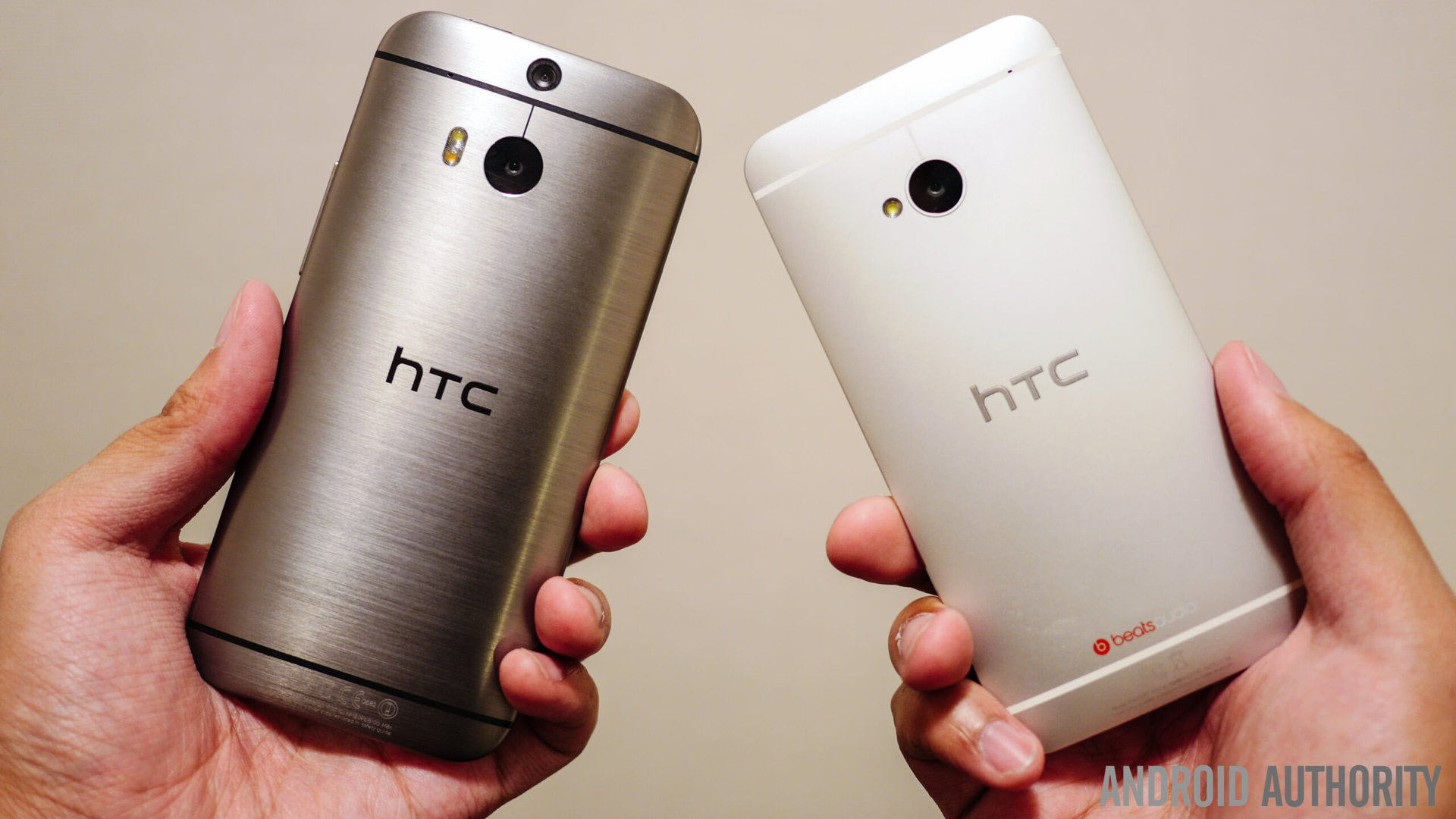
Gone are the capacitive buttons that were found on the front of the HTCOne (M7), which the One (M8) favoring on-screen software keys. You still do get the black bar along the bottom of the display though, this time housing just the HTClogo. With a display that is 0.3-inches bigger, the One (M8) is definitely the larger of the two, but the width is about the same, making it quite comfortable to hold. The added weight, along with the curved back, actually makes the phone sit even more snugly in the hand.
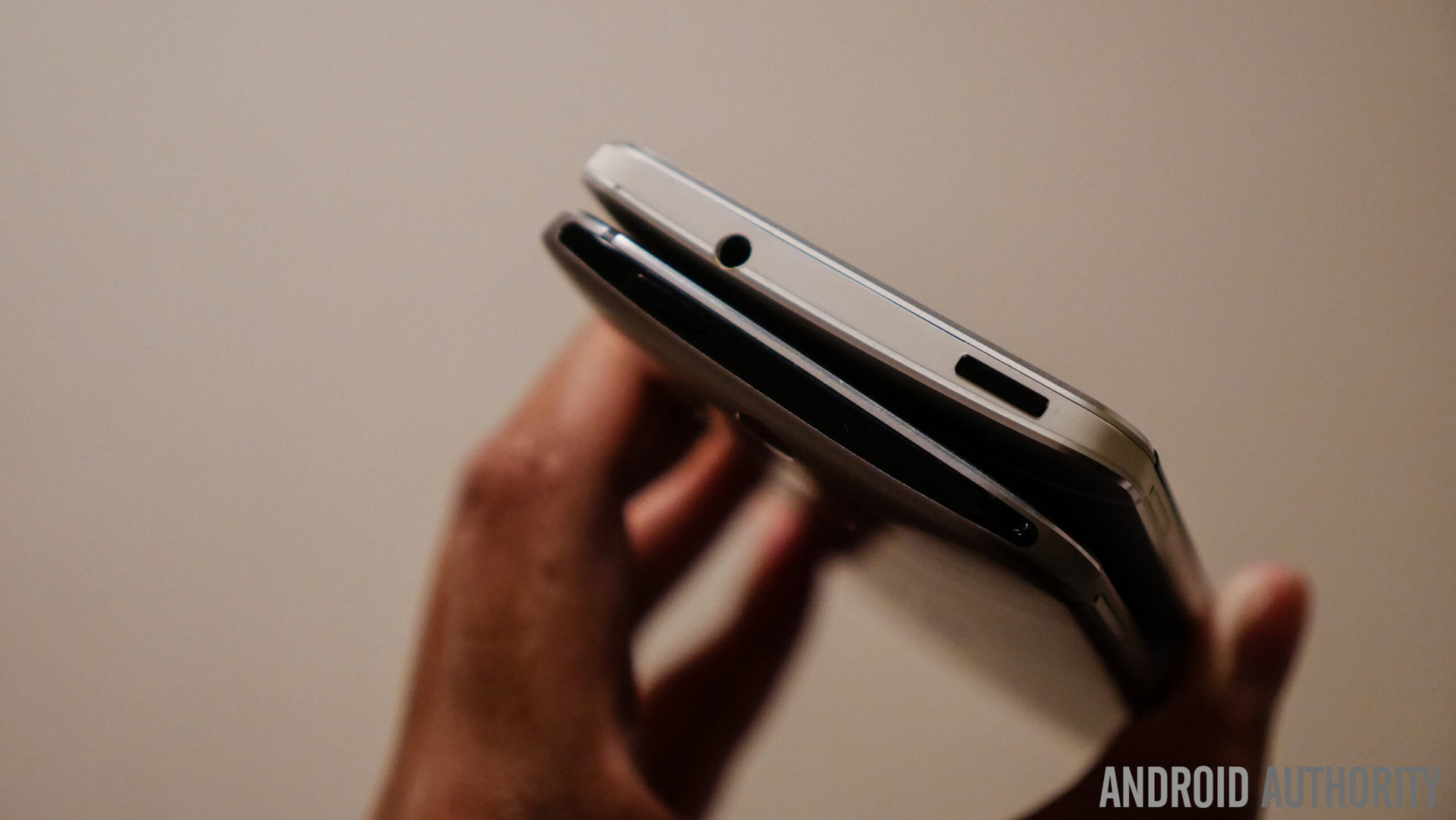
HTC has always come up with great designs for their smartphones, and while they might not have made a significant change this time around, there are enough to differentiate between the two.
HTC has always been conservative with regards to the size of the display, with the One (M7) featuring a 4.7-inch display at a time when other OEMs were releasing devices with 5-inch screens. The HTCOne (M8) does get a bump in display size to 5-inches, but is still slightly smaller than other recently released flagship smartphones.
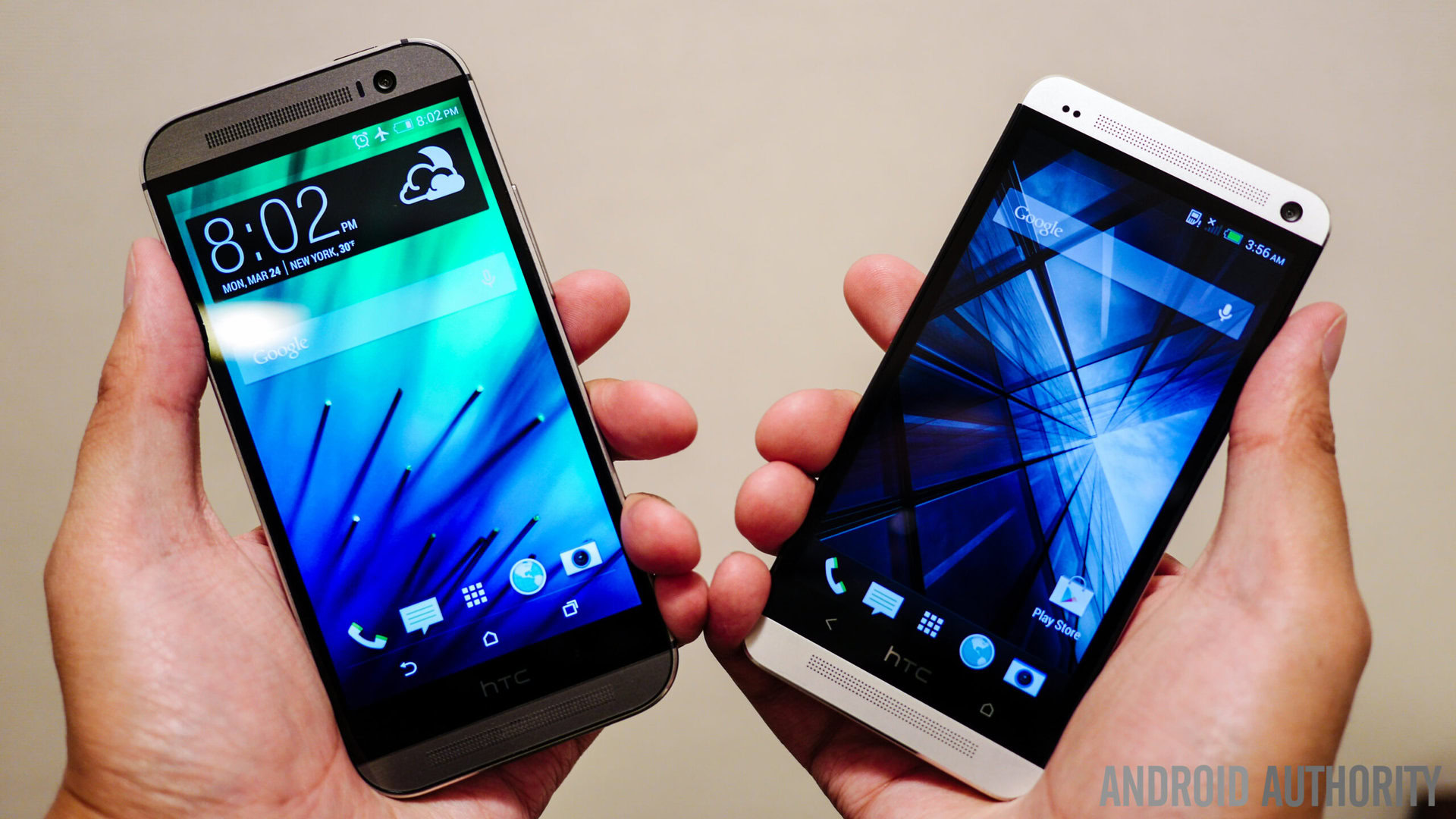
You get a beautiful Super LCD 3 Full HD display once again, with the increase in size resulting in a drop in the pixel density from 469 ppi to 442 ppi, which is hardly noticeable. As always, colors do pop, viewing angles are great, and there should be no issues with brightness.
Featuring a quad-core Qualcomm Snapdragon 801 processor clocked at 2.3 GHz, coupled with 2 GB of RAM, you get the best processing package that is currently available. With the updated Sense UI also lighter and sleeker, the One (M8) flies through the interface, and should easily handle anything you can throw at it.
On the other hand, the One (M7) is powered by a quad-core Qualcomm Snapdragon 600 processor clocked at 1.7 GHz, with 2 GB of RAM as well. This is of course still a very capable performer. Basically, the difference in performance between the two comes because of the year to year change in available hardware. The Snapdragon 600 was the best at this point last year, and the current best is the Snapdragon 801.
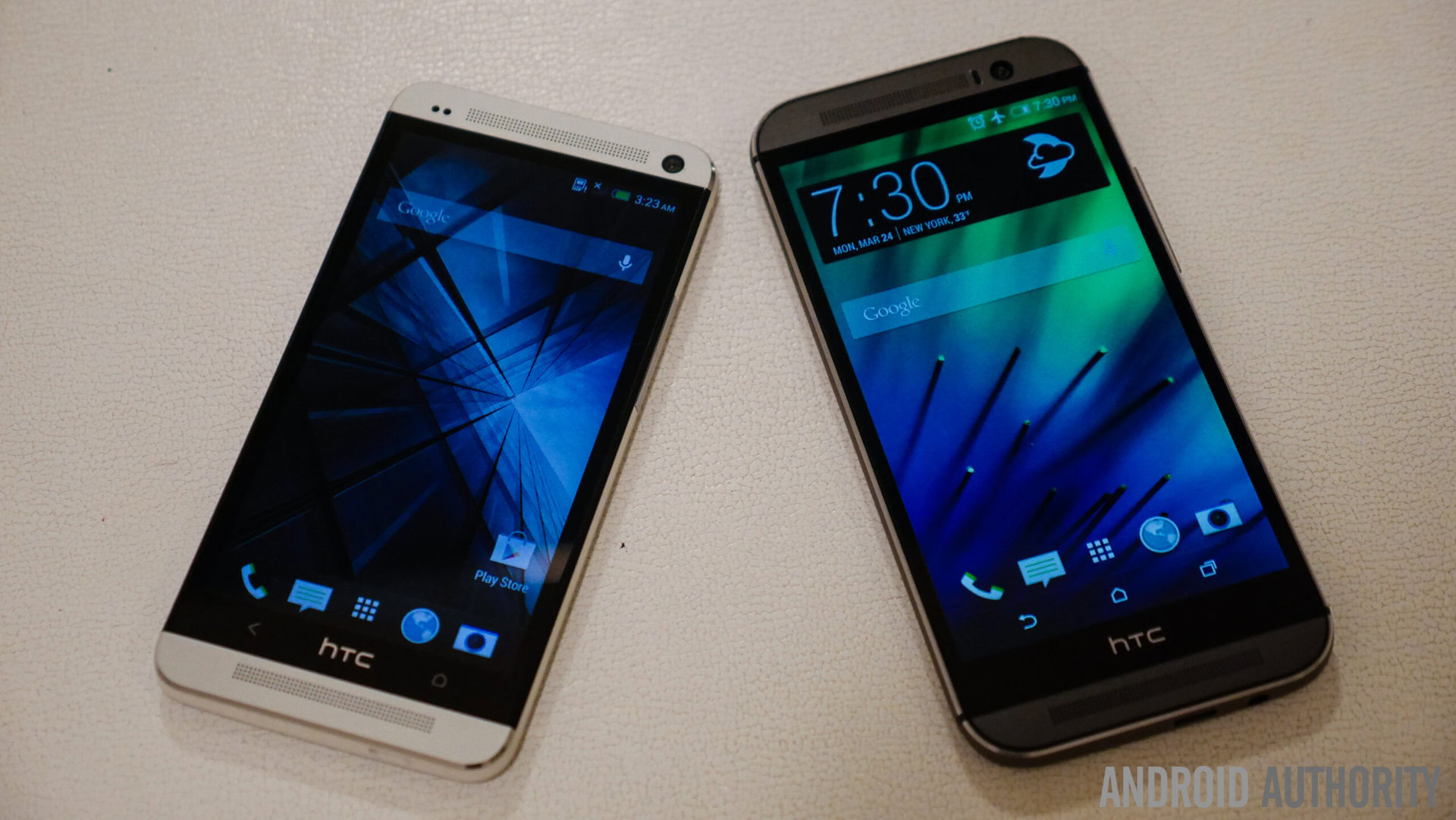
The HTCOne (M7) featured specifications that were quite similar to the Samsung Galaxy S4, with arguably the better design, but one of the main reasons stated by consumers for choosing the former was the availability of expandable storage. Luckily, the HTCOne (M8) takes care of this gripe, with the 16/32 GB of in-built storage expandable up to 128 GB via microSD card.
The battery also gets a bump from the 2,300 mAh unit of the One (M7) to the 2,600 mAh battery of the One (M8). With the Snapdragon 801 said to be more frugal in its battery consumption, and the enhanced battery saving capabilities available with the latest edition of the device, the battery should perform quite well.
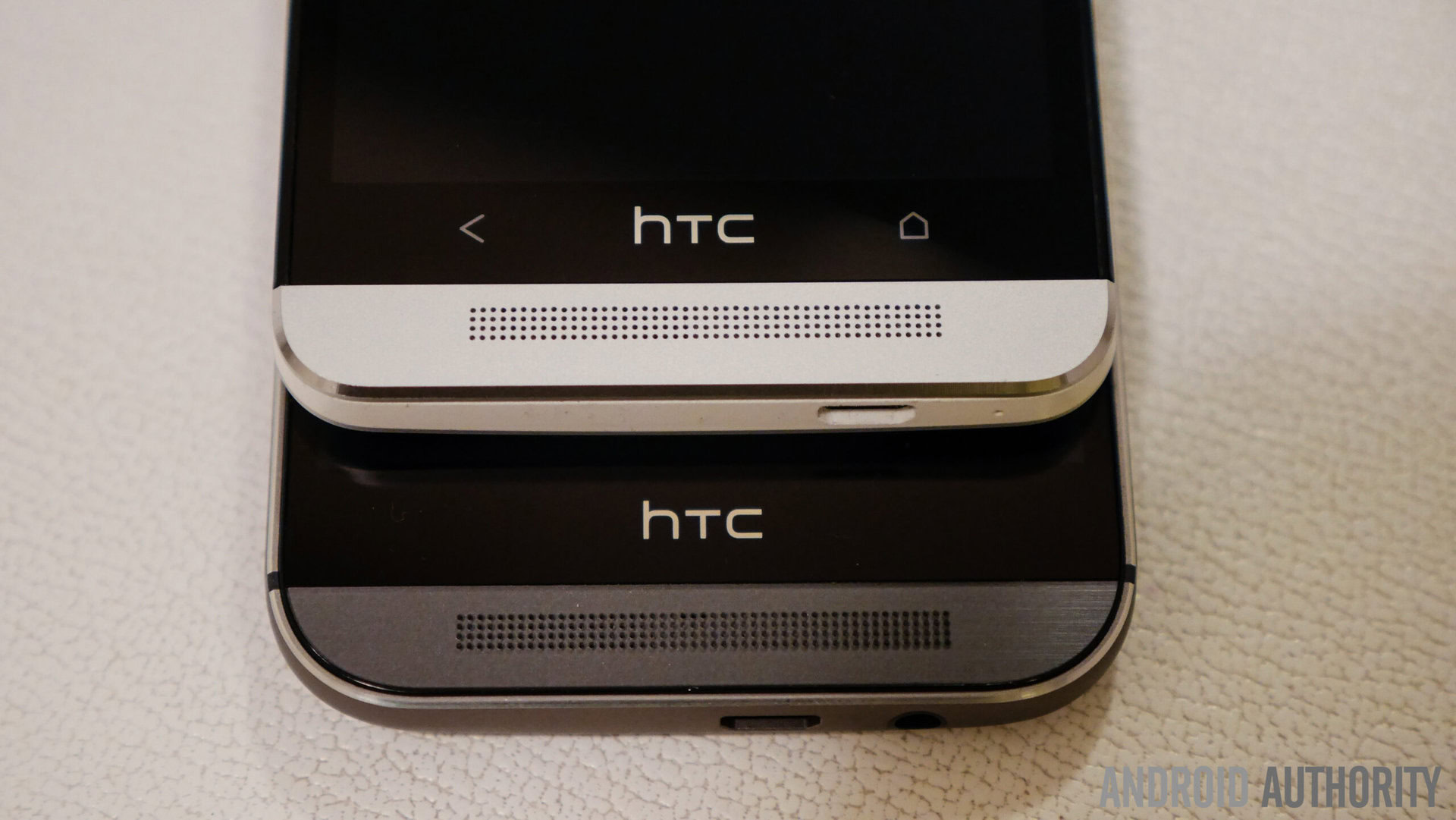
The UltraPixel camera of the HTCOne (M7) had its hits and misses, with its saving grace being good low-light photography and software features like Zoe. The same camera might be making a return with the One (M8), but the bits and pieces themselves are new and have been updated, which should continue to improve quality.
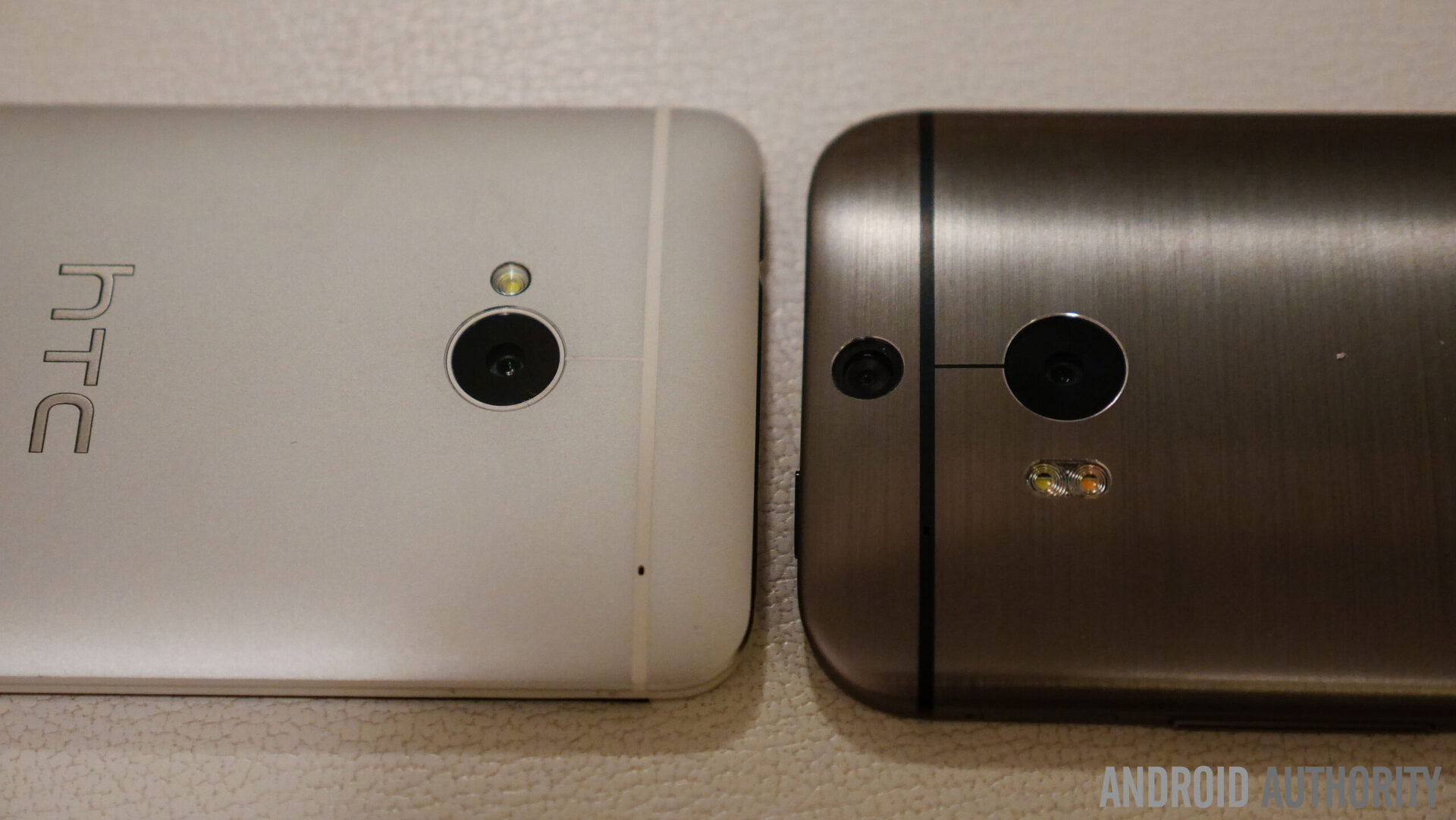
Dual LED flash helps with getting a better skin tone when using flash, as it can detect ambient light in order to perform under five different shades. But of course, the biggest story here is the addition of a secondary rear camera. The purpose of this secondary shooter is purely creative, and works to capture depth data, allowing you to create effects such as Selective Focus, Background Defocusing, adding 3D effects, and more.
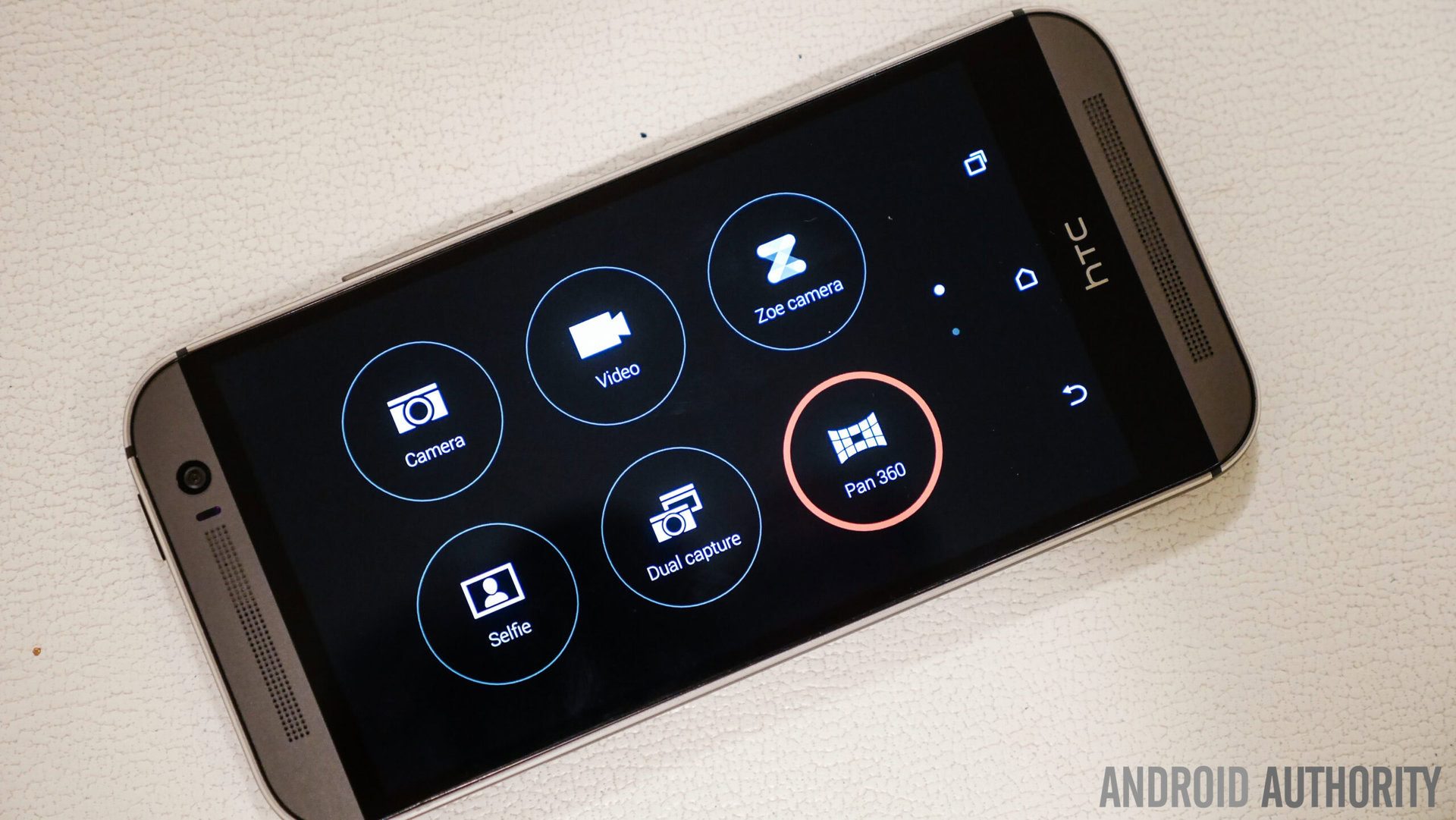
On the software side of things, Zoe makes a return, but not exactly as what we knew of it from before, but rather as an application and network that will allow for enhanced sharing. While the camera software may not be as featured packed as the Samsung Galaxies, it does offer quite a bit once you dive in, and we can’t wait to run it through its paces.
You get an updated HTCSense 6.0 on top of Android 4.4 Kitkat with the One (M8), which should be available to its predecessor quite soon as well. While it’s not a major UI overhaul, with a lot of elements you may be familiar with returning, there are a few subtle differences that help consolidate the experience.
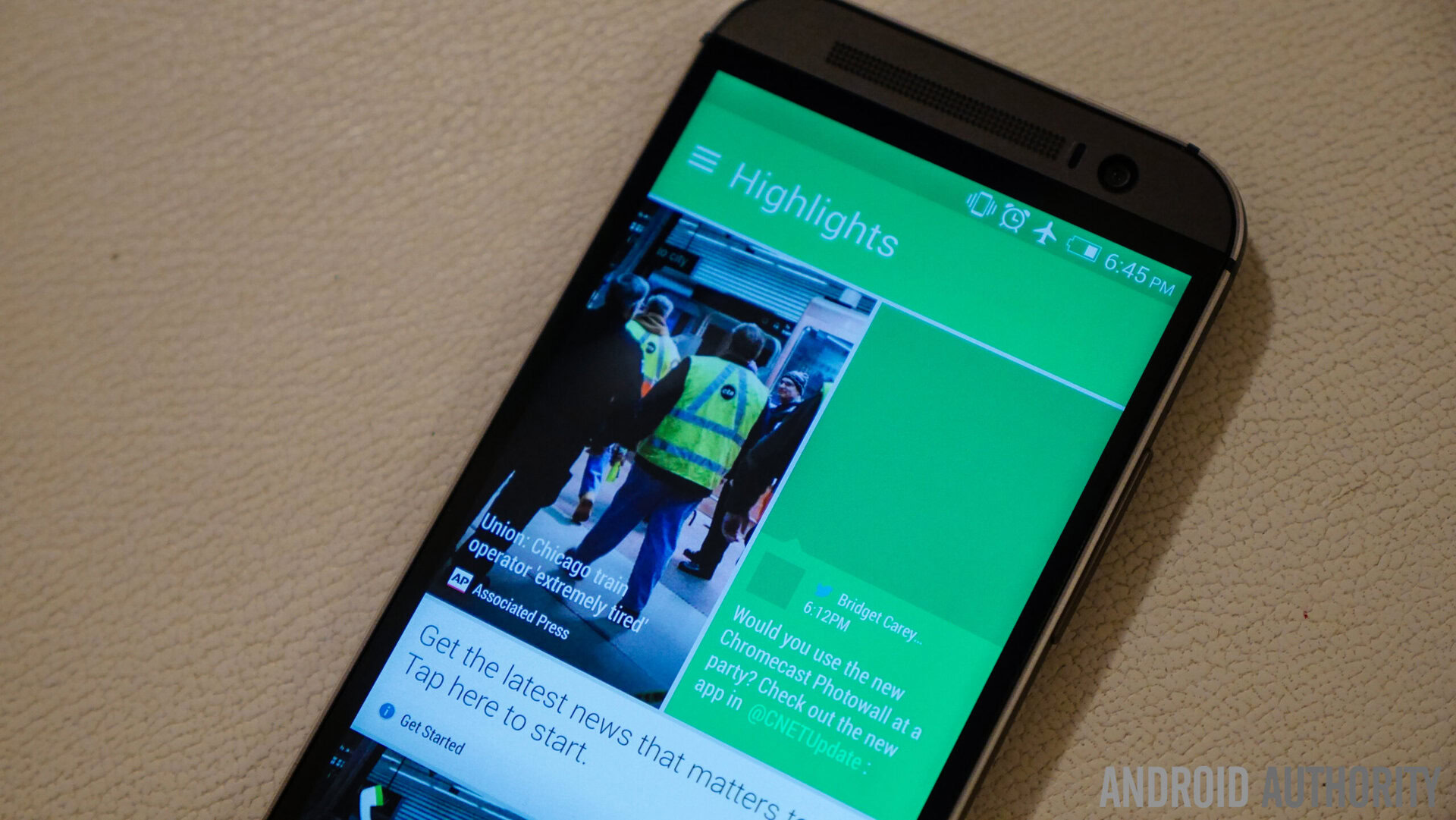
Blinkfeed returns, but is now a full scroll, as opposed to the paginated layout from before. Adding content largely remains the same, but a lot more news sources have been added, and the integration of the Fitbit and Foursquare applications should only make the experience better. Apps like the HTCGallery have also been updated, along with the inclusion of HTCTV, that takes advantage of the IR sensor at the top of the phone.
The big change on the software side of things is the introduction of Motion Launch, which includes various gesture-based features that should prove to be very useful, such as raising the phone to your ear to answer a call, a double tap to turn the screen on or off, and swiping left, right, or up to open different applications.
| HTC One (M8) | HTC One (M7) | |
|---|---|---|
Display | HTC One (M8) 5-inch Super LCD 3, Full HD (1920 x 1080), 442 ppi | HTC One (M7) 4.7-inch Super LCD 3, Full HD (1920 x 1080), 469 ppi |
Processor | HTC One (M8) 2.3 Ghz quad-core Qualcomm Snapdragon 801 | HTC One (M7) 1.7 Ghz quad-core Qualcomm Snapdragon 600 |
RAM | HTC One (M8) 2 GB | HTC One (M7) 2 GB |
Cameras | HTC One (M8) Ultrapixel Duo Camera, dual-LED flash 5 MP front camera with wide-angle lens | HTC One (M7) Ultrapixel rear camera 2.1 MP front camera |
Battery | HTC One (M8) 2,600 mAh | HTC One (M7) 2,300 mAh |
Storage | HTC One (M8) 16/32 GB, expandable | HTC One (M7) 16/32 GB, not expandable |
Networks | HTC One (M8) 3G, 4G LTE | HTC One (M7) 3G, 4G-LTE |
Connectivity | HTC One (M8) GPS, GLONASS, microUSB 2.0, Wi-Fi a/b/g/n, Bluetooth 4.0 LE, NFC | HTC One (M7) GPS, GLONASS, microUSB 2.0, Wi-Fi a/b/g/n, Bluetooth 4.0 LE, NFC |
Software | HTC One (M8) Android 4.4 Kitkat | HTC One (M7) Android 4.1 Jelly Bean |
Dimensions | HTC One (M8) 146.36 x 70.6 x 9.35 mm, 160 grams | HTC One (M7) 137.4 x 68.2 x 9.3 mm, 143 grams |
A lot of what HTCgot right with the HTCOne (M7) makes a return with the One (M8), and takes things to another level, with a more refined design, upgraded specifications, an interesting camera combination, and finally, the inclusion of microSD expansion, and is definitely what you’d hope to see from a successor of great device.